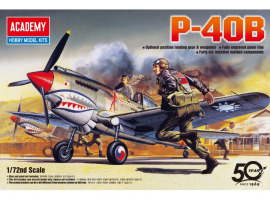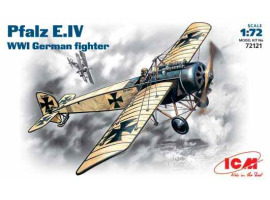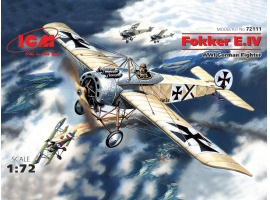
Sopwith F1 Camel
Sopwith F1 Camel
1 feedback
Out of stock
Out of stock
The Sopwith Camel Scout was a British single-seat fighter aircraft of the First World War, known for its excellent maneuverability among the aircraft of those years. Developed by Sopwith Aviation Company. Herbert Smith, chief designer of Sopwith, began designing a successor to the Pup fighter in the summer of 1916. The new fighter had to surpass the previous model in speed and maneuverability, while maintaining all the flying qualities. As a result, the aircraft received a more streamlined fuselage, for the characteristic lines of which it received the name "Camel" (from the English camel). The design of the fighter was common for that time: a power frame made of wood with wire extensions. The main elements of the aircraft were compactly placed in the forward fuselage, only 2 meters long. As a result, it was possible to achieve high maneuverability. The armament consisted of two Vickers machine guns mounted in the wing console, later replaced by two synchronized machine guns on top of the engine.
Description
The Sopwith Camel Scout was a British single-seat fighter aircraft of the First World War, known for its excellent maneuverability among the aircraft of those years. Developed by Sopwith Aviation Company. Herbert Smith, chief designer of Sopwith, began designing a successor to the Pup fighter in the summer of 1916. The new fighter had to surpass the previous model in speed and maneuverability, while maintaining all the flying qualities. As a result, the aircraft received a more streamlined fuselage, for the characteristic lines of which it received the name "Camel" (from the English camel). The design of the fighter was common for that time: a power frame made of wood with wire extensions. The main elements of the aircraft were compactly placed in the forward fuselage, only 2 meters long. As a result, it was possible to achieve high maneuverability. The armament consisted of two Vickers machine guns mounted in the wing console, later replaced by two synchronized machine guns on top of the engine.
Buy together
Reviews
Reviews
Also browsing with this item
1 feedback
275 UAH
-15%
234 UAH
1 feedback
310 UAH
-20%
248 UAH
1 feedback
310 UAH
-20%
248 UAH
Viewed products
out of stock











